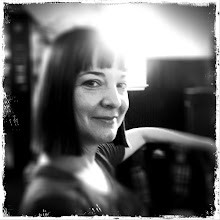
This article was published in the Winter 2009 issue.
IN EVERY ISSUE WINTER 2009
ON CAMPUS - UF FLASHBACK
Radical Women
Exhibit chronicles ways UF women put Gainesville on the liberation map
Story by GABI LORINO
Photos provided by the UF Digital Collections

Forty years ago, Gainesville was conservative like most Southern towns. Women's lives revolved around family and husbands, and they had little economic and political power.
Meanwhile, Americans were being challenged by another important issue: racism against blacks.
At UF, students and faculty formed a group to stand up for civil rights. Two members, Beverly Jones and Judith Brown (JD '74), met while demonstrating on behalf of UF's civil rights student organization and bonded over their experience within the group, where they felt women's ideas were overlooked and undervalued.
The two brainstormed and decided to write down their ideas about what needed to change in American society so that women could receive more respect and better opportunities.
Jones wrote the first half of the paper, which was inspired by her unequal status in her marriage to a UF professor and her experience with the group, for which she was an adviser. Brown finished the second half, and together they submitted it to the first women's liberation meeting in Maryland as "Toward a Female Liberation Movement." The paper was later named after its home state, and "The Florida Paper" put Gainesville on the women's liberation map.
"The Florida Paper" and other documents that tell the story of women's liberation around the country and in North Central Florida are featured in a new online digital collection called "Radical Women in Gainesville." This exhibit contains information, stories and timelines that show how a small North Florida town became a magnet for radical feminists.
The collection was compiled by curator Leila Adams (BA '07), who continues her work through UF's Center for Women's Studies and Gender Research under the guidance of professor Trysh Travis.
Her observations show the impact radical feminists' actions had on American society.
"Gainesville residents not only wrote the first theoretical framework for the movement in 1968, they also formed one of the first five women's liberation groups in the country," she noted.
Participants in such groups in Gainesville faced logistical challenges about how and where to meet. When they distributed copies of "The Florida Paper" in public, they were met with hostility from men and businesses that drove distribution of the paper - and early meetings - into public women's restrooms.
The resistence they faced fueled their motivation, however. By the mid-1970s, activists established the Women's Center, a monthly newspaper called WomaNews, a feminist bookstore and the Gainesville Women's Health Center, which offered women's health services including workshops on contraception, abortion and domestic violence. At the height of the women's liberation movement, the center sponsored the Southeastern Women's Health Conference, which helped bond area feminist organizations, and included author and activist Rita Mae Brown, who once attended UF. Finally, services such as domestic violence and sexual abuse hotlines were established. For example, an anti-rape crisis hotline started in the broom closet of a Gainesville Episcopalian church and grew into the Peaceful Paths domestic abuse network, which still operates today.
